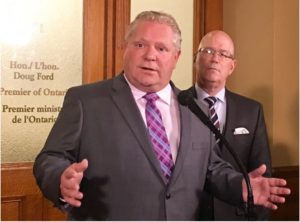April 8, 2022
Published in the Hamilton Spectator, April 18, 2022
Last week the Ford government introduced its latest response, in the form of new legislation (Bill 109), to the housing affordability crisis in GTHA.
Consistent with the government’s overall approach to planning and development issues, the proposed legislation again doubles down on the theme of ‘cutting red tape” as a means to accelerate housing construction. The legislation would further marginalize the roles of municipal councils and the public in the planning process and moves towards normalizing the practice of relying on arbitrary ministerial planning orders (Ministerial Zoning Orders or MZOs) as a major planning tool.
The government’s approach seems based on a relatively simple assumption that the core problem is one of housing supply. It follows that if more housing is built, then prices will fall. Removing ‘red tape’ from the housing approval and development process should accelerate housing construction and solve the problem.
The problem with this logic is that the Ford government has already engaged in an unprecedented degree of ‘red tape’ cutting in favour of development. The pace of construction has accelerated, to a point where the supply of dwellings is increasing faster than population growth. But contrary to conventional expectations, housing prices have continued to stay high.
The government seems to be acting on the basis of a fundamental misdiagnosis of the problem. It is now becoming clear that the challenge has less to do with supply, and more to do with the ‘financialization’ of housing as an investment vehicle. That itself is the product of a convergence of factors, including an extended period of historically low-interest rates, availability of foreign and domestic capital looking for investments and expectations of continued population growth. Multi-property owning ‘Investors’ now constitute the largest category of housing buyers in the province.
To this list has to be added the province’s own approach to planning matters. The government has emphasized the need to cut ‘red tape’ on behalf of developers and builders. In practice this has meant weakening rules intended to reduce urban sprawl and provide affordable housing, cutting opportunities for public participation in the planning process and marginalizing the roles of local governments.
Municipal efforts to manage redevelopment in existing urban areas to allow for the establishment of the necessary infrastructures and provide for the development of mixed-used complete communities, as per the province’s planning rules, have been overridden by the government at the behest of the development industry. More generally, the province’s widespread use of Ministerial Zoning Orders (MZOs) has sent a signal to developers that you can get anything you ask for - if you have the right connections.
The resulting planning ‘free for all’ created by the province has invited widespread speculation by developers, particularly the purchase of properties in anticipation of being able to obtain relatively easy approvals for intensive redevelopment. High-rise condominium focussed hyper-intensification is dominating around urban transit hubs, while low-density sprawl defines the urban periphery. That trend has been reinforced by the government’s focus on new and expanded highways through the region, notably 413 Highway and Bradford Bypass, prompting further speculative booms along their proposed routes.
If the province is serious about addressing housing affordability it needs to adopt a strategy that addresses the underlying causes of the problem. That means removing the incentives for speculation and ‘investment’ in the housing market. The federal government's new budget has recognized the role of the 'financialization' of housing in the affordability crisis. It proposes to impose limitations on offshore buyers and adjust the tax system to discourage speculation and house-flipping. These are good initial steps towards addressing the issue.
Stabilizing the province's own planning and development process would be an important step in the process as well. The province needs a predictable, transparent, rules and evidence-based approach to planning, not one based on access, connections and ministerial whim. And it needs to give municipal councils the ability and direction to manage development and build communities that are affordable, liveable and sustainable. Without such measures, the region’s crises around planning, development and affordability will only deepen.

